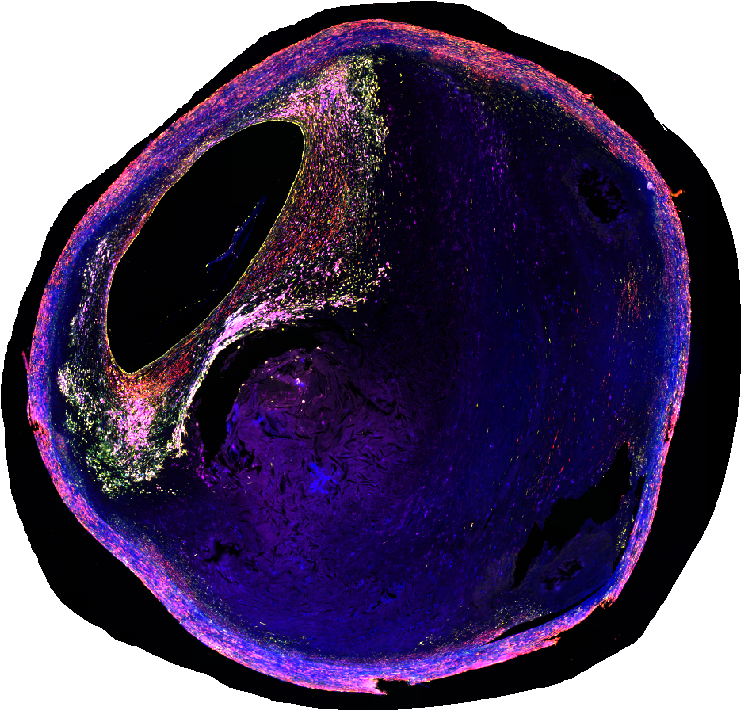
Vascular Basic Research
Vascular research at our institution combines clinical expertise with cutting-edge technology to better understand the mechanisms of vascular diseases and develop new potential therapeutic approaches. At the core of our work is the Munich Vascular Biobank (MVB), one of the world's largest vascular biobanks, distinguished by its highly standardized preparation methods and precise histological processing. The MVB comprises a collection of tissue and blood samples from more than 4,500 patients from our clinic and continues to grow steadily. The MVB serves as a foundation for numerous research projects addressing various aspects of vascular diseases. The focus of this research is on the formation and progression of atherosclerotic plaques in vascular diseases, as well as the investigation of abdominal aortic aneurysms (AAA).
Research Areas
Our research focus on three main topics:
-
Carotid Stenosis
We investigate the fundamental mechanisms and pathologies that promote plaque formation progression in the carotid artery and contribute to the development of vulnerable plaques. These unstable plaques carry an increased risk of ruptures that can trigger strokes. Our work aims to better understand risk factors and identify predictive biomarkers that allow for a more accurate assessment of individual rupture risk. Additionally, we seek strategies to improve plaque stability and specifically reduce the risk of cardiovascular events.
-
Peripheral Arterial Disease (PAD)
Our research focuses on understanding the underlying molecular and cellular mechanisms of peripheral arterial disease (PAD). This includes investigating systemic processes and local changes in the vessels that contribute to disease onset and progression.
-
Aneurysm Research
Our research focuses on understanding the pathogenesis of abdominal aortic aneurysms (AAA), with particular emphasis on the molecular and structural changes that contribute to the onset and development of this disease. The goal of this research area is to develop new strategies for early diagnosis and therapy.
State-of-the-Art Technologies
Bulk and Single-Cell Sequencing (scSeq)
With these methods, we analyze gene expression patterns of both tissues and individual cells to characterize cellular heterogeneity and disease-relevant mechanisms in detail.
Chromatin Immunoprecipitation (ChIP) Analyses and Genotyping
These procedures allow us to investigate epigenetic and genetic factors that influence disease development and provide valuable insights into the regulation of disease-relevant genes.
Ex-vivo Plaque Models
By using tissue samples, we can utilize realistic models to study plaque dynamics. These ex-vivo plaque models enable functional studies and testing of novel therapeutic approaches under conditions that closely resemble human pathology.
